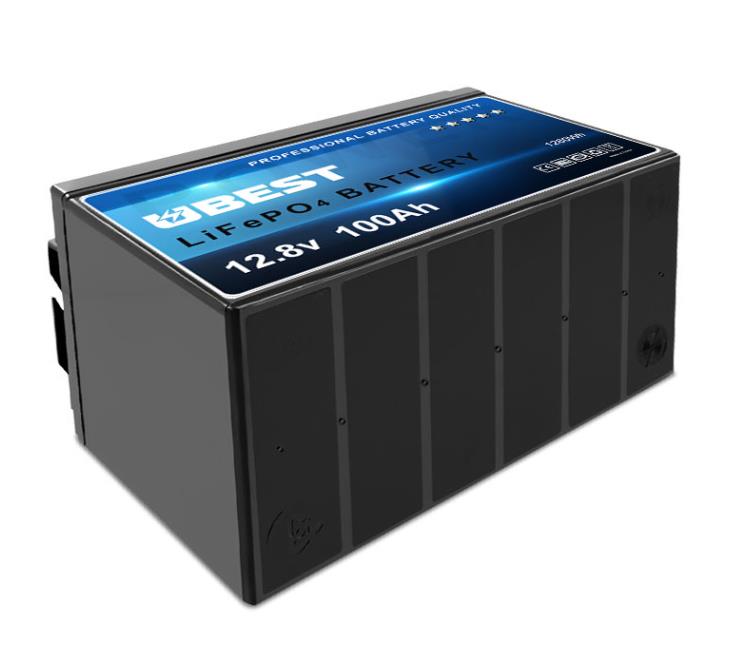Views: 200 Author: Ubest Publish Time: 2023-08-14 Origin: Site









Our solar power systems utilize LiFePO4 batteries, which have excellent thermal and chemical stability and may raise battery safety.
A lithium-ion battery that uses LiFePO4 as the positive electrode material is referred to as a LiFePO4 battery. Lithium cobalt oxide, lithium manganate, lithium nickel oxide, ternary compounds, LiFePO4, etc. are the primary cathode materials used in LiFePO4 batteries. The majority of LiFePO4 batteries employ lithium cobalt oxide as their cathode ingredient. Here is 12V 100Ah Lithium Ion Deep Cycle Battery.
The LiFePO4 cathode material has a wide range of raw material sources, a long cycle life, a high safety index, and minimal environmental pollution. LiFePO4-type cathode materials, hotspot materials that have been under research recently, have even started to formally enter the market. Figure 1 depicts the spatial organization of LiFePO4, which has an olivine structure and a theoretical specific speed of 170 mph. The lithium ions FeO6 are released between the layers of the lithium-ion battery during charging as a result of an oxidation reaction. They then go into the electrolyte and eventually reach the negative electrode. When all of the electrons in the external circuit arrive at the negative electrode simultaneously, the iron will convert from ferrous ions to ferric ions. There is an oxidation reaction. A reduction reaction takes place during the discharge process, which is the opposite of the charging process.
A lithium-ion battery that uses LiFePO4 as the positive electrode material is referred to as a LiFePO4 battery. Lithium cobalt oxide, lithium manganate, lithium nickel oxide, ternary compounds, LiFePO4, etc. are the primary cathode materials used in LiFePO4 batteries. The majority of LiFePO4 batteries employ lithium cobalt oxide as their cathode ingredient.
Cobalt (Co) is the most expensive metal and has the least amount of storage; nickel (Ni) and manganese (Mn) are more affordable metals, and iron (Fe) has more storage. The costs of cathode components are comparable to those of these metals. As a result, LiFePO4 batteries built with LiFePO4 cathode components ought to be rather affordable. Its non-polluting nature and concern for the environment are further features.
As a rechargeable battery, the requirements include a large operating temperature range, non-toxic or less toxic material, high capacity, high output voltage, good charge-discharge cycle performance, stable output voltage, high-current charge-discharge, electrochemical stability, and safety in use (not due to overcharge, over-discharge, or short circuit, which can cause combustion or explosion due to improper operation). LiFePO4 batteries with LiFePO4 as the positive electrode must meet stringent performance criteria, including high discharge rates (5–10C discharge), steady discharge voltage, safety (no burning or explosion), long cycle durations, and no environmental contamination. It is the best high-current output power battery available today.
A polymer separator in the middle separates the positive electrode from the negative electrode, allowing lithium-ion to pass through but not electrons, and graphite is used on the right side as the battery's positive electrode. LiFePO4 is used as the positive electrode of the battery and is connected to the positive electrode of the battery by an aluminum foil. Using copper foil, the battery's negative and positive electrodes are connected. The electrolyte is located between the battery's upper and lower ends, and a metal shell hermetically seals the battery.
Lithium ions from the positive electrode of LiFePO4 batteries move through the polymer separator to the negative electrode during charging; during discharge, the lithium ions from the negative electrode move back through the separator to the positive electrode. The lithium ions that travel back and forth during charging and discharging are what give LiFePO4 batteries their name.
The LiFePO4 battery has a 3.2V nominal voltage, a 3.6V final charge voltage, and a 2.0V final discharge voltage. There will be some variations in their performance since different manufacturers will utilize positive and negative electrode materials and electrolyte materials that are of varying quality and method. For instance, the capacity of two identical batteries (standard batteries in the same packaging) varies greatly (10% to 20%).
It is important to note that LiFePO4 power batteries manufactured by various factories will differ somewhat in several performance parameters. In addition, some battery performance—such as internal resistance, self-discharge rate, charge, discharge temperature, etc.—is not taken into account.
The three classifications of LiFePO4 power battery capacity are tiny (tenths to few milliamp hours), medium (tens of milliamp hours), and large (hundreds of milliamp hours). The same properties of various battery types vary slightly in other ways as well.